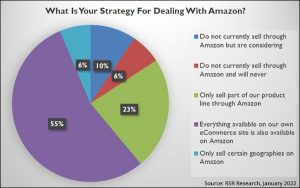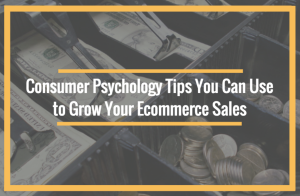February 8, 2016

Look, we all know how it feels to wake up to an inbox brimming with promotional emails that we just don’t have time for — or frankly — any interest in opening.
We’re quick to archive or delete them, without a second thought.
But when you’re the one designing and sending those emails, you dream of a different situation. When it’s your business, your product, your message, you think, “This is important! This is good stuff! My open rates shouldn’t be this dismal.” And yet, we email marketers are also guilty of rapid-fire archiving.
Still, we ask ourselves (or our marketing consultant) how we can make our marketing emails stand out from the rest. How do we get our audience actually interested in reading and engaging with our emails?
And with these questions almost always comes the inevitable inquiry: How frequently should I be sending my emails?
Let’s take a look at five critical ideas you need to take into consideration when determining how frequently to send your marketing emails.
5 Ways to Determine How Often to Email Your List
 It’s not about frequency; it’s about value.
It’s not about frequency; it’s about value.
First of all, let’s get one thing straight. If you’re asking how frequently you should be emailing your list, you’re asking the wrong question.
You should not be sending emails just to send emails. You should be sending emails to provide value.
The question you should be asking is: How frequently can I provide value to my audience?
If your email is not providing value to your subscribers in some way, just don’t send it. Seriously. Don’t.
So, many marketers get caught up in “needing” to send an email twice a week. They scrounge for something to send, and end up either trying to fluff up some bottom-of-the-barrel content that isn’t actually useful to their audience, or bashing their readers on the head with the same message over and over again, slightly rehashed each time.
Not only does this not have a positive effect, it actually has a very negative impact on you and your marketing. Every email you send that is not valuable to its recipient is an unfair ask of that person. It’s as if you’re saying “please take the time to read my email, even though it is not useful to you.”
Would you bother with an email like that if it showed up in your inbox? Of course not. Treat your readers with the same respect.
If it’s not valuable, don’t send it.
Once you get in the habit of only sending emails that are valuable, you’ll build a far more trusting relationship with your readers, instead of instilling in them a trained response to ignore your emails. Stop sending the same message over and over.
Stop sending the same message over and over.
This one follows nicely from point No. 1. Let’s say you build a beautiful email with a strong call-to-action — something that does in fact provide much value to your audience. (Good start!)
But, judging from your low click-through rates, no one’s interested.
So you decide to send that same message again, in case they missed it the first time. And then again, but with a new subject line, of course. Sigh, no takers. Let’s send it one more time?
Unfortunately, this is an all-too-common response from frustrated and lazy email marketers. But again, by sending the same thing repeatedly, you’re only alienating your readers even further.
Instead, you should:
- Diversify your content: Invest the time in creating relevant, useful content. This will give you some variety when it comes to choosing what you send in your emails.
- Segment your list: Figure out which of your subscribers you should be nurturing from the top of the funnel, and which are more qualified to start receiving information about your product/service. How else can you divide up your list to send information that is more relevant to each subgroup?
- Switch up your offers: Haven’t had much luck getting folks to request a product demo? Try promoting a free trial or a discount offer. What are some other ways you can engage them?
- Highlight different value propositions: If you’ve been pitching your product one way in the majority of your emails and other marketing efforts, try a new perspective. Take the time to understand your audience’s biggest challenges and frame your messaging accordingly.
 If this is your first interaction, move quickly.
If this is your first interaction, move quickly.
According to InsideSales.com, 35-50 percent of sales go to the vendor that responds first.
Stop and think about that for a moment. That is alarming.
And, it means that if you’re not following up almost immediately with a new lead who has expressed interest in your business, you’re missing out on some major opportunity to close customers and increase your bottom line. Of course, your sales team should be using lead scoring to prioritize their calls, but the responsibility to follow up quickly doesn’t just fall on them.
As a marketer, it’s your responsibility to have automated lead-nurturing emails in place for this very purpose. When someone downloads one of your content offers, do they receive a follow-up email giving them access to that content and a call-to-action to sign up for a demo or a free trial? If someone signs up for a demo, do they get an email immediately to confirm the scheduled time and direct them to learn more about your service on your website in the meantime?
After your initial interaction, you can space out your communications with these folks a bit more. But when it comes to that first inquiry — when you’re still top-of-mind and they’re still excited about your business — don’t wait. For all you know, they might be ready to hop on a call, sign up for another offer, or heck, whip out their credit card, and… uh… oh, you didn’t have those emails set up? Oops.
 Identify your higher-intent audiences.
Identify your higher-intent audiences.
Just as we talk about your audience members being at different stages of your marketing funnel, we can also talk about people as showing different levels of purchase intent.
For example, someone who visits your pricing page shows more intent to purchase than someone who visits your home page or reads a blog post. Someone who requests a demo shows more intent than someone who downloads a free e-book. A shopper who puts an item in his cart but doesn’t purchase is also high-intent.
Start out by making a list of high-intent actions that your audience members might display. Then (you guessed it!) actually create those lists in your email tool.
When you’re designing your email strategy and determining how frequently to send your emails, you can give yourself the approval to send more frequent emails to your higher-intent groups.
Why? Because the closer someone is to purchase, the more you stand a chance of that person opening and reading your product-focused emails, and finding them valuable.
Someone who visited your demo page but didn’t request a demo is a lot more likely to find value in an email that says:
What questions can I answer about our product? Feel free to schedule a time to chat with a member of our team, and we’d be happy to show you around!
…than is someone who just subscribed to your blog but receives that same email.
 Don’t rely solely on email marketing; try other channels too.
Don’t rely solely on email marketing; try other channels too.
If you’re still seeing low response rates to your emails, despite making them extremely relevant and valuable, and sending them at a reasonable frequency based on their intent levels, it may be wise to shift gears a bit.
Don’t limit yourself to email marketing — there are plenty of other ways to target your audience with those same calls-to-action, and you may find that they’re more responsive on other channels.
One great option to try is running re-targeting campaigns through social media or display ads. These allow you to target specific audiences based on website visits or your own customized lists, so you can still segment appropriately and map the right content to the right audiences.
Find ways to diversify your efforts so you’re not putting all your eggs in the email marketing basket.
When it comes to figuring out your email marketing, there is no single right answer. Use the data you’ve collected to this point, and combine it with some perspective-taking (“what would I appreciate/not appreciate if I were one of my email subscribers?”) and the five tips we discussed here to figure out what the best approach will be for your email marketing.
Digital & Social Articles on Business 2 Community(89)







